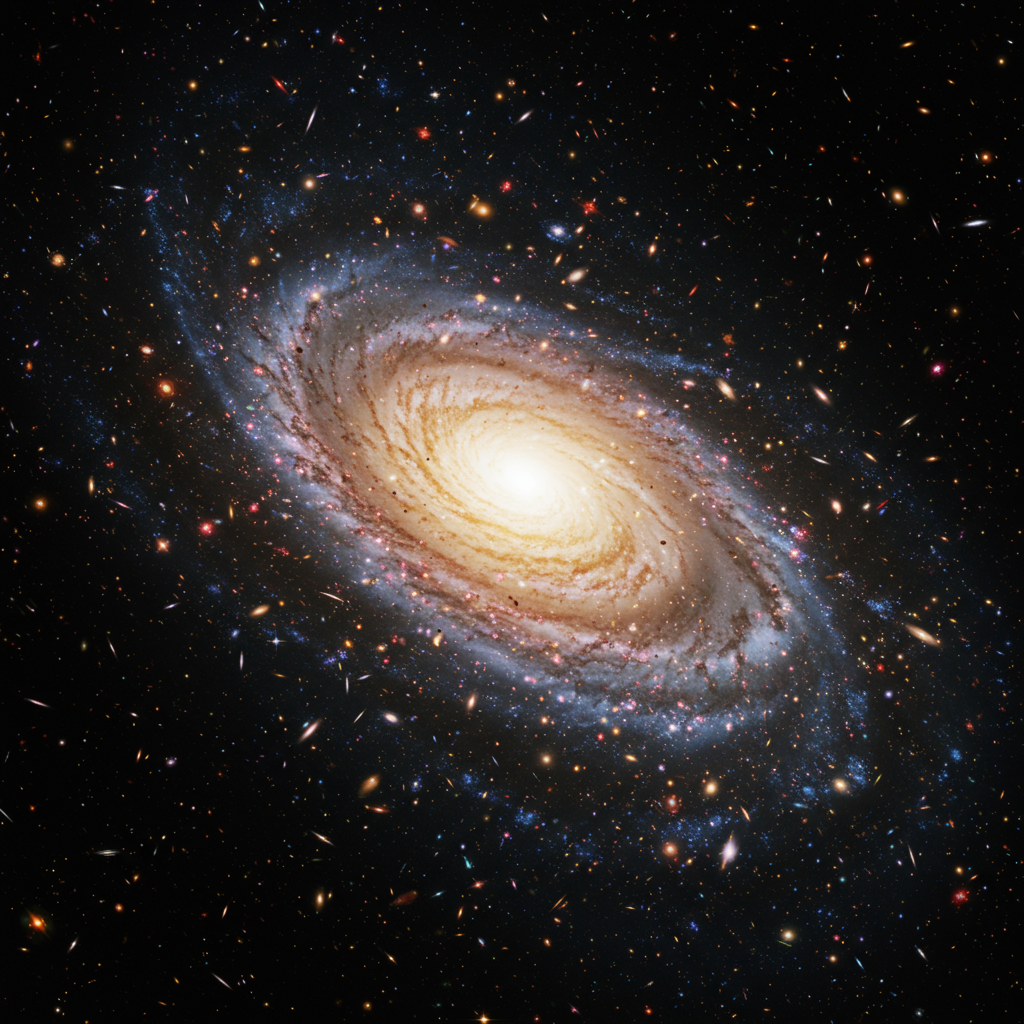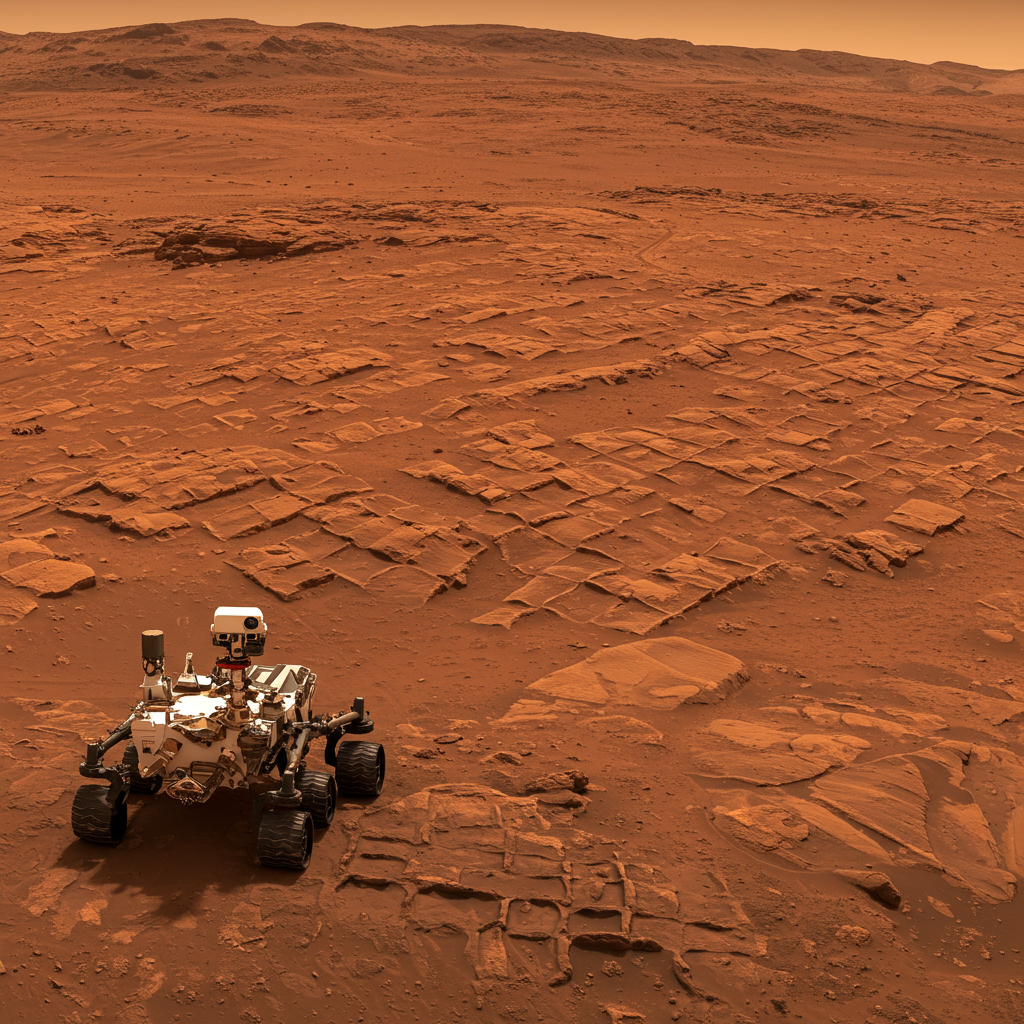Could the vast, ever-expanding cosmos we inhabit one day reverse course and collapse in on itself? For decades, the prevailing theory suggested our universe was destined for an endless, cold fade. However, recent scientific findings are challenging that long-held belief, introducing the dramatic possibility of a “Big crunch.”
A new study, drawing on extensive astronomical data, suggests a startlingly different timeline for the universe’s ultimate fate. Forget the infinite expansion; this research proposes that the outward surge driving cosmic growth could slow, stop, and even reverse within billions of years. It paints a picture where, far in the distant future, all matter and spacetime could rush back together into a single, incredibly dense point.
Rethinking Cosmic Expansion
For years, cosmologists have observed that the universe is not just expanding, but accelerating its expansion. This acceleration is attributed to a mysterious force dubbed dark energy, which makes up roughly 70% of the cosmos. The standard model of cosmology has often treated dark energy as a “cosmological constant”—an unchanging force that would push the universe apart forever. This led to the expectation of a “Big Freeze” or “heat death,” where the universe expands indefinitely, eventually becoming cold, dark, and empty as stars burn out and matter becomes increasingly spread thin.
However, the recent study, involving researchers from institutions like Cornell University and Shanghai Jiao Tong University, challenges this static view of dark energy. Their model, informed by data from powerful astronomical surveys, suggests that dark energy may not be constant after all. Instead, it could be dynamic, changing over time in a way that could dramatically alter the universe’s destiny.
A Proposed Timeline: Shrinking Begins in 7 Billion Years
Based on their analysis of dark energy’s potential behavior, the researchers have put forth a specific, albeit uncertain, timeline. They predict that the universe will continue to expand, but at a gradually slowing pace, until it reaches its maximum size in approximately 7 billion years from now. At this point, the cosmos is estimated to be about 69% larger than its current scale.
What happens next is the truly surprising part. Rather than holding steady or continuing a slow expansion, the researchers suggest that an inherent “elastic” force, possibly linked to a dynamic dark energy model (such as one involving ultra-light particles like axions and a negative cosmological constant), could become dominant. This force would act like a cosmic rubber band stretched to its limit, pulling everything back together.
This contraction phase would begin gradually around the 7-billion-year mark. Initially slow, the inward collapse would pick up speed over billions of years.
The Road to the Big Crunch: 20 Billion Years From Now
If this model holds true, the universe’s contraction wouldn’t stop until all the matter within it converges. The study forecasts that this ultimate collapse, known as the “Big Crunch,” could occur approximately 20 billion years from the present day. Put another way, considering the universe is about 13.8 billion years old, the Big Crunch could happen roughly 33.3 billion years after the Big Bang.
The Big Crunch scenario envisions a reversal of the Big Bang. Instead of expanding from an infinitely hot, dense point, all galaxies, stars, planets, and fundamental particles would rush back together, compressing into an extraordinarily hot and dense state under immense gravitational force. This cataclysmic event would likely destroy all existing structures, matter, and even spacetime itself as we understand it.
Decoding the Data: Insights from DESI
This dramatic prediction isn’t pulled from thin air; it’s grounded in recent observational data. The researchers specifically utilized information from large-scale astronomical surveys, including the Dark Energy Survey (DES) and, crucially, the Dark Energy Spectroscopic Instrument (DESI).
DESI, located at Kitt Peak National Observatory in Arizona, is an advanced instrument capable of observing light from thousands of galaxies simultaneously. Using DESI, scientists have created the most detailed 3D map of the universe to date, charting the positions of nearly 15 million galaxies and quasars.
By comparing this intricate map with other key cosmological measurements, such as patterns in the cosmic microwave background (CMB)—the afterglow of the Big Bang—and observations of distant supernovae (exploding stars), scientists can measure the universe’s expansion rate at different points in its history. They analyze subtle variations in the distribution of matter left over from the early universe, known as baryon acoustic oscillations (BAO). These patterns act like a cosmic “standard ruler,” providing benchmarks to measure distances and expansion over time.
Recent analysis of DESI data, while preliminary, has hinted that the standard model of cosmology, which assumes constant dark energy, might not fully explain all observed data consistently. Some researchers involved with DESI have noted a high degree of confidence, though not absolute certainty, that the data points towards the force of dark energy potentially changing or weakening over time. This weakening dark energy could eventually allow gravity to overcome its outward push, initiating the collapse. This shift in the observational evidence is what makes the Big Crunch scenario, previously more speculative, appear potentially more realistic to some scientists.
Acknowledging the Uncertainty
It is critical to emphasize the significant caveats and uncertainties associated with this Big Crunch prediction. The researchers themselves acknowledge that their model relies on limited observational data concerning the precise nature and evolution of dark energy. Consequently, the prediction comes with a considerable margin of error.
The concept of a negative cosmological constant or a specific dynamic dark energy model that leads to contraction remains speculative. The scientific community is still grappling with the true nature of dark energy. Because of these uncertainties and the complexity of the physics involved, the previously dominant view of eternal expansion (the Big Freeze) is still considered a perfectly viable alternative scenario for the universe’s end.
Future, more precise measurements of dark energy’s behavior from upcoming astronomical missions will be crucial in either confirming, refining, or ruling out this specific Big Crunch timeline. Cosmology is a dynamic field, and our understanding of the universe’s distant future is constantly being updated as new data emerges.
Other Potential Cosmic Destinies
Adding another layer to the universe’s mysterious ultimate fate, other research explores different end-of-universe scenarios occurring on vastly different timescales. While the Big Crunch predicts a relatively swift, fiery end in roughly 20 billion years, other theories suggest a much longer, colder process.
Research building on concepts like Stephen Hawking’s black hole evaporation suggests that even the most stable structures in the universe, like white dwarfs (the dense remnants of sun-like stars), might eventually evaporate due to quantum fluctuations over unimaginable periods. This could lead to a universe populated only by fundamental particles and radiation, eventually dissipating into an empty quantum haze after perhaps 10^78 years or even longer, depending on the precise mechanisms. This “slow fade” scenario stands in stark contrast to the rapid collapse of the Big Crunch and highlights the wide range of possibilities cosmologists are currently investigating. The debate over the universe’s ultimate destiny is far from settled, serving as a critical test bed for the consistency of fundamental physics, especially the interplay between quantum mechanics and gravity.
Beyond Our Time: Human and Galactic Fates
While a potential Big Crunch in 20 billion years might sound alarming, it’s important to put that timescale into perspective relative to human existence and even the lifespan of our solar system and galaxy.
Human civilization has existed for mere thousands of years, and complex life on Earth for only about 600 million years. The predicted timeline for the Big Crunch is billions of years into the future. Long before cosmic contraction might begin, our local cosmic neighborhood will undergo dramatic transformations.
In about 5 billion years, our Sun will exhaust its core hydrogen fuel, swell into a red giant star, and likely consume the inner planets, including Earth. Around the same time, our Milky Way galaxy is on a collision course with its large neighbor, the Andromeda galaxy. These two colossal star systems will merge over billions of years, creating a new, larger galaxy.
These events—the Sun’s death and the galactic merger—will happen billions of years before the earliest predicted start of universal contraction. Therefore, humanity, or any descendants, would need to have left Earth and possibly our merged galaxy to potentially witness any signs of the universe’s large-scale reversal.
What’s Next? Testing the Predictions
The significance of this study lies not just in its dramatic prediction but also in its potential testability. As noted, future astronomical projects are specifically designed to gather more precise data on dark energy. Instruments and missions planned for the coming years aim to measure the universe’s expansion history and the behavior of dark energy with unprecedented accuracy.
Data from these endeavors could provide the crucial evidence needed to confirm or refute the dynamic dark energy models that lead to a Big Crunch scenario. Until then, the universe’s ultimate fate remains an open question, a captivating mystery at the forefront of cosmological research.
Frequently Asked Questions
What is the “Big Crunch” theory discussed in the study?
The “Big Crunch” theory is a cosmological scenario for the universe’s ultimate fate. According to the new study discussed, it suggests the universe’s current expansion, driven by dark energy, will eventually slow, stop (in about 7 billion years), and reverse. This would cause all matter and spacetime to contract, collapsing back into an extremely hot, dense state, similar to the Big Bang in reverse, projected to occur around 20 billion years from now.
Where did the researchers get the data for this prediction?
The researchers based their model on observational data from major astronomical surveys, specifically the Dark Energy Survey (DES) and the Dark Energy Spectroscopic Instrument (DESI). DESI, in particular, provided extensive data used to create the largest 3D map of the universe, allowing scientists to measure the expansion rate at different times by analyzing patterns like baryon acoustic oscillations, which hint at the behavior of dark energy.
Will humans be alive to see the universe start shrinking or the Big Crunch?
It is extremely unlikely that humanity or any of its descendants will witness these cosmic events. The study predicts the universe will start shrinking in about 7 billion years and potentially end in a Big Crunch around 20 billion years from now. However, our Sun is expected to become a red giant and engulf Earth in roughly 5 billion years, and our Milky Way galaxy will merge with the Andromeda galaxy around the same timeframe. These local events will occur long before the predicted universal contraction begins.
Conclusion
The universe’s ultimate destiny remains one of the most profound mysteries in science. While the standard model long favored an endless, cold expansion, new data, particularly from instruments like DESI, is prompting cosmologists to revisit alternative possibilities. The potential for dark energy to be dynamic, rather than a constant force, opens the door to scenarios like the Big Crunch, where the cosmos eventually collapses in on itself billions of years from now.
While this specific timeline is subject to significant uncertainty and requires further observational confirmation, the research represents a crucial step in our understanding. It shifts the discussion from purely theoretical possibilities to potentially testable predictions based on current data, reminding us that the story of the cosmos is still being written, one discovery at a time. The coming years, with new, powerful telescopes and surveys, promise to shed more light on whether the universe is destined for a slow fade into darkness or a dramatic, fiery end.




